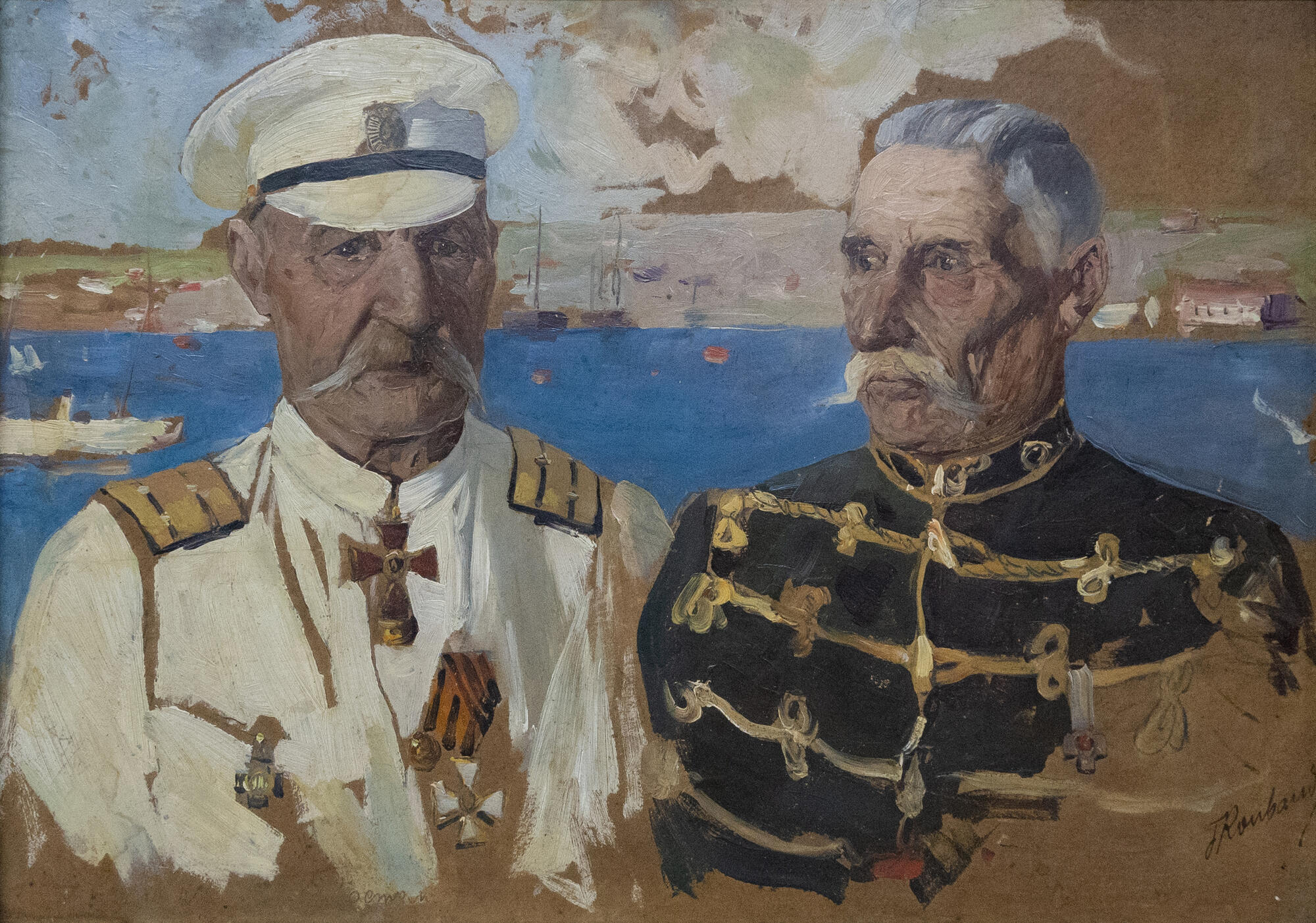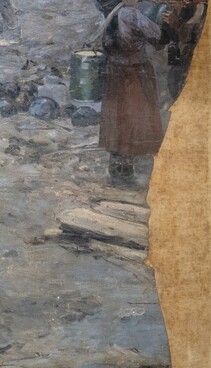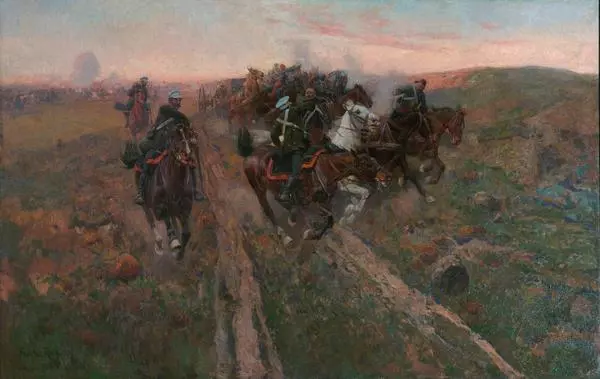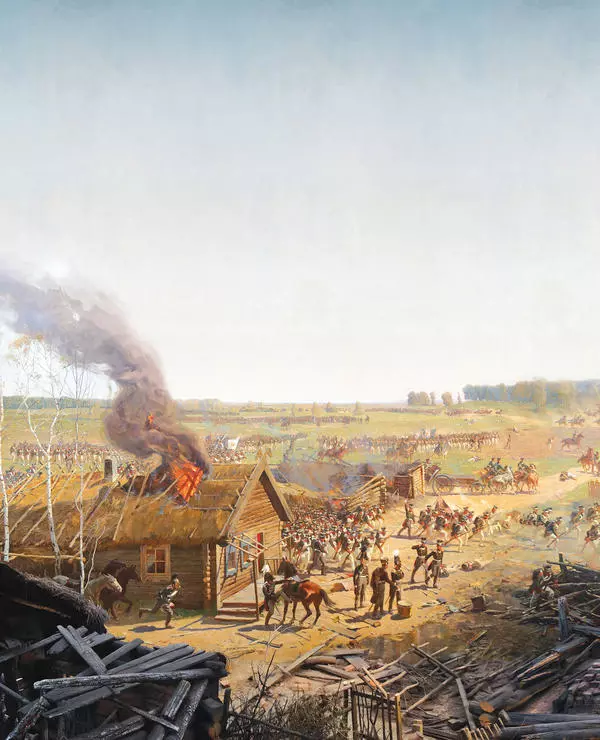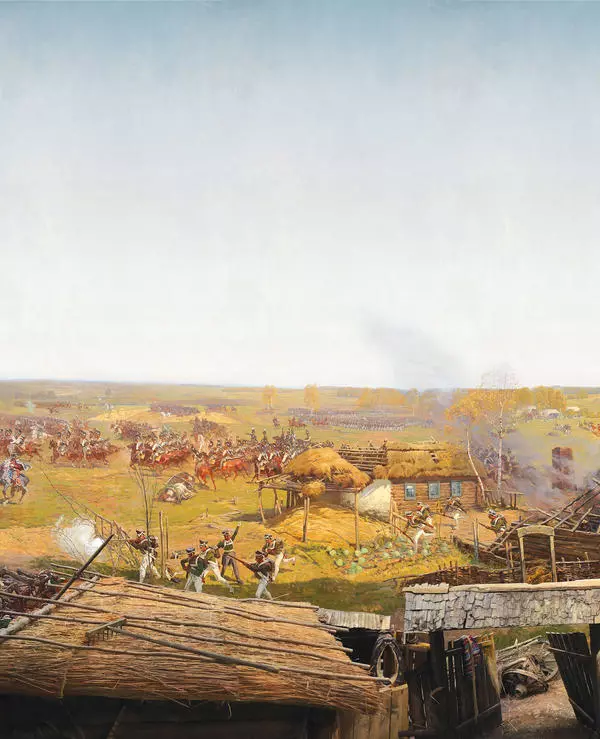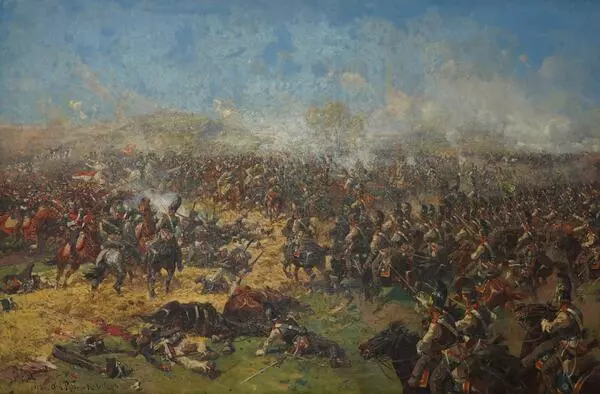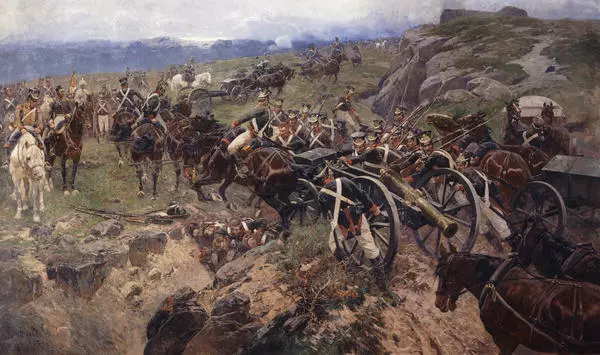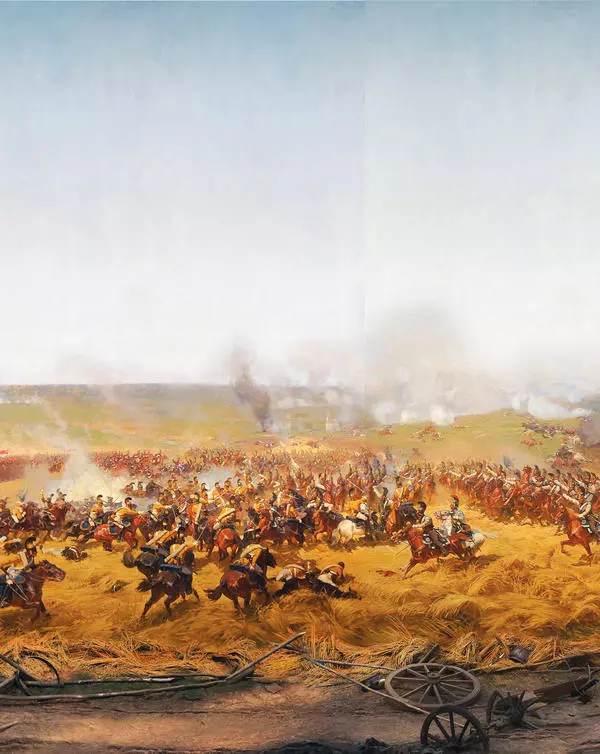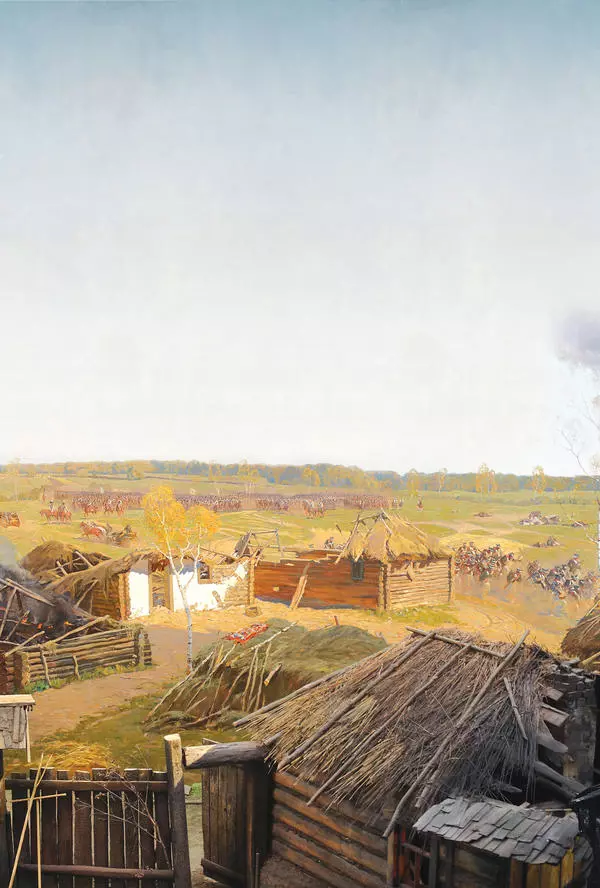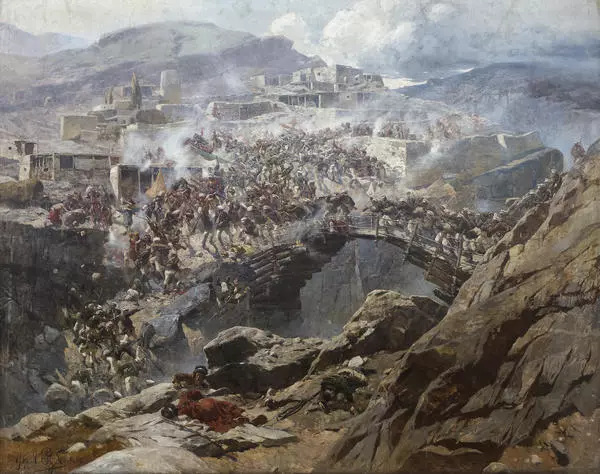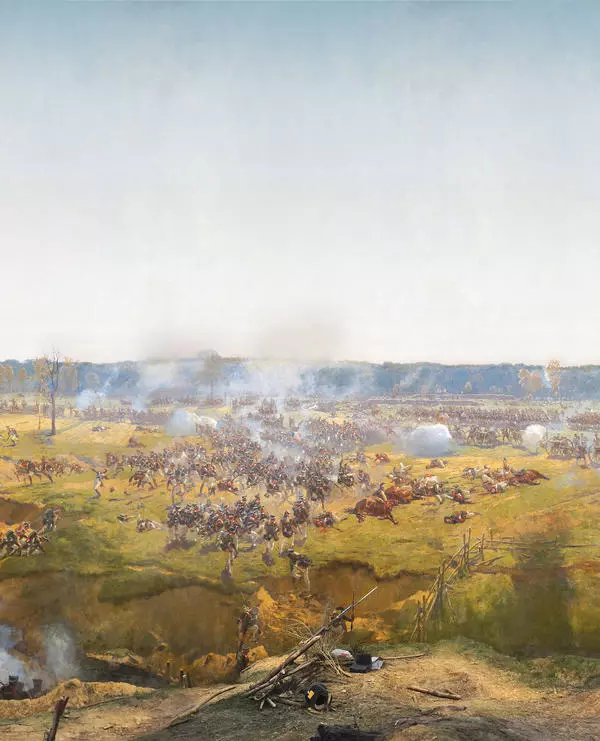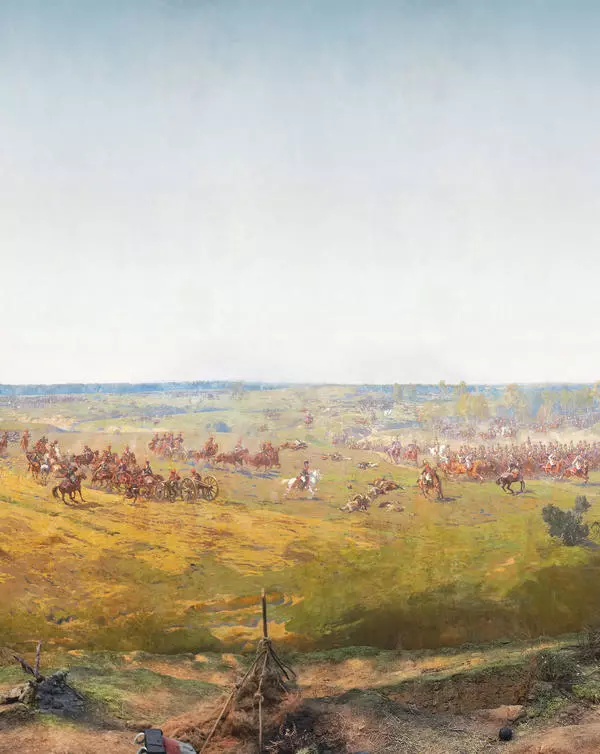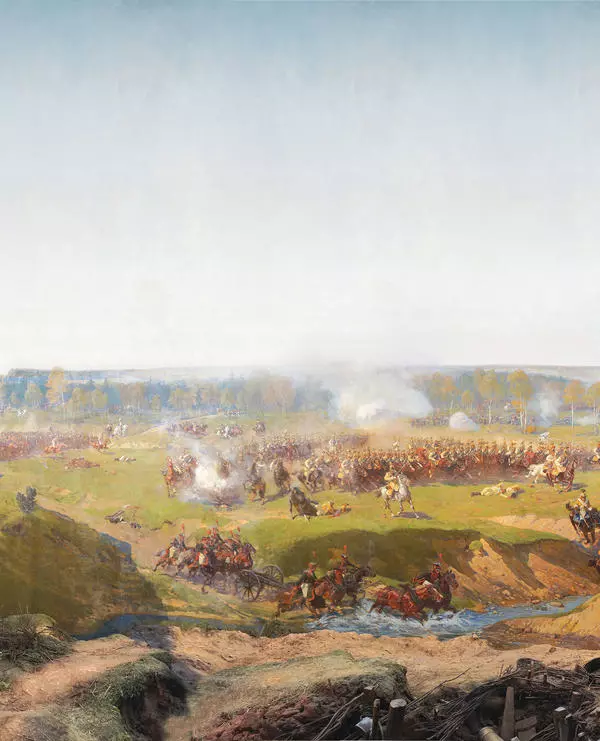Franz Roubaud painted the sketch “Portrait of Two Officers” in 1902, when he was preparing to work on the panorama “Assault of June 6, 1855”.
The artist depicted two elderly officers with bouffant mustaches in military uniform. The man on the left side of the sketch is dressed in a white uniform with shortened shoulder marks with three visible stars on them. He has awards on his chest, and a uniform cap on his head. Roubaud painted the officer on the right in a dark green hussar uniform.
In the background, the artist painted a seascape: a bay with two sailing ships, a yacht and a less urbanized opposite shore. The areas at the bottom of the sketch and the upper right corner are not sketched.
The large-scale canvas for which Roubaud created this preparatory sketch is dedicated to the assault of Sevastopol in 1855. On land, the city was not sufficiently defended, and the allies in the anti-Russian coalition — France, England and Turkey — expected to capture it in a week.
At the time of their landing near Eupatoria in September 1854, the Anglo-French landing force had over 60 thousand soldiers and a fleet, which outnumbered the Russian ships more than three times. However, Russian troops and sailors of the Black Sea Fleet, who went ashore to fight, gave the enemy a serious rebuff. In a short time, defensive fortifications were erected on the southern side of the city, and the entrance from the sea was blocked: by purposely flooding and sinking the ships so that the enemy warships could not pass into the Sevastopol Bay.
The siege of Sevastopol dragged on for 11 months and became one of the main events of the Crimean War of 1853-1856. During this time, the allied troops carried out six massive bombings of the city from land and sea.
Roubaud completed his work on the panorama in the spring of 1905. On a large-scale canvas of 115 meters in length and 14 meters in height, the artist depicted over 4,000 characters, including real heroes of the First Defense of Sevastopol: admirals and generals, officers, sailors and soldiers, doctors and nurses, as well as many ordinary residents who defended the city and took part in battles.
Later, in 1942, in the Second Defense of Sevastopol during the Great Patriotic War, the panorama came under German artillery fire. Soldiers and sailors cut the canvas into pieces and took it out of the burning building. Two-thirds of the canvas were saved. The rescued fragments were evacuated on the last remaining destroyer “Tashkent”, which managed to break through to Novorossiysk. By 1954, to commemorate the centenary of the Defense, the panorama was reopened to the public. The subject and composition of Franz Roubaud’s panorama have been preserved.
The artist depicted two elderly officers with bouffant mustaches in military uniform. The man on the left side of the sketch is dressed in a white uniform with shortened shoulder marks with three visible stars on them. He has awards on his chest, and a uniform cap on his head. Roubaud painted the officer on the right in a dark green hussar uniform.
In the background, the artist painted a seascape: a bay with two sailing ships, a yacht and a less urbanized opposite shore. The areas at the bottom of the sketch and the upper right corner are not sketched.
The large-scale canvas for which Roubaud created this preparatory sketch is dedicated to the assault of Sevastopol in 1855. On land, the city was not sufficiently defended, and the allies in the anti-Russian coalition — France, England and Turkey — expected to capture it in a week.
At the time of their landing near Eupatoria in September 1854, the Anglo-French landing force had over 60 thousand soldiers and a fleet, which outnumbered the Russian ships more than three times. However, Russian troops and sailors of the Black Sea Fleet, who went ashore to fight, gave the enemy a serious rebuff. In a short time, defensive fortifications were erected on the southern side of the city, and the entrance from the sea was blocked: by purposely flooding and sinking the ships so that the enemy warships could not pass into the Sevastopol Bay.
The siege of Sevastopol dragged on for 11 months and became one of the main events of the Crimean War of 1853-1856. During this time, the allied troops carried out six massive bombings of the city from land and sea.
Roubaud completed his work on the panorama in the spring of 1905. On a large-scale canvas of 115 meters in length and 14 meters in height, the artist depicted over 4,000 characters, including real heroes of the First Defense of Sevastopol: admirals and generals, officers, sailors and soldiers, doctors and nurses, as well as many ordinary residents who defended the city and took part in battles.
Later, in 1942, in the Second Defense of Sevastopol during the Great Patriotic War, the panorama came under German artillery fire. Soldiers and sailors cut the canvas into pieces and took it out of the burning building. Two-thirds of the canvas were saved. The rescued fragments were evacuated on the last remaining destroyer “Tashkent”, which managed to break through to Novorossiysk. By 1954, to commemorate the centenary of the Defense, the panorama was reopened to the public. The subject and composition of Franz Roubaud’s panorama have been preserved.
